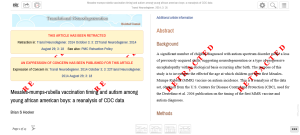Pop culture figures sometimes use autistic as a slur. "Political autism" has sometimes cropped up as a term of abuse, mostly in Britain, though sometimes in the United States. A few weeks ago, Wesleyan professor Peter Rutland wrote in the prestigious publication Foreign Policy: "Nationalism is a form of political autism, reacting in an excessive and unpredictable fashion to outside stimuli. Only patient diplomacy, mutual understanding, and the study of history can steer East Asia to a peaceful future."
At The Daily Beast, Emily Shire writes about one variant:
At The Daily Beast, Emily Shire writes about one variant:
Jeffrey Goldberg’s column in The Atlantic detailing the Obama administration increasingly frosty relationship with Israeli prime minister Benjamin Netanyahu sent geopolitical tongues wagging. Details of administration officials’ list of private insults to describe Netanyahu include chickenshit, myopic, obtuse, blustering. But one description was abhorrent on a level far above politics: “Aspergery.”
Despite the fact that it is incredibly offensive to people on the autism spectrum and the disability community to use the word “Aspergery,” no one on the right or left has criticized the Obama administration for reportedly using the term. While pundits scramble to analyze international implications, no one seems especially perturbed that the highest executive office allegedly throws around a “disability diagnosis as a pejorative,” as Ari Ne’eman, president of the Autistic Self Advocacy Network, puts it.
